


|
For all your Glasgow links |
|
Home |
|
About My City |
|
Interesting facts |
|
My City |



|
Neglected City |
|
Humane Society |
|
The Clyde |
|
The Fancy Fair |
|
In 1884, a dispensary for the Glasgow Children’s Hospital was needed and funds had to be raised. This was done by means of a ‘Fancy Fair’ in the then St. Andrew’s Halls, now part of the Mitchell Library. It took place over several days and was opened each day by a dignitary. All the stalls were run by ladies of nobility or social standing and each stall had a different Country theme, with the ladies and their helpers attired in national costumes of the Country they were representing. |
|
Glasgow Children’s Hospital Fancy Fair in 1884 |
|
The goods on offer on the stalls were quality, high-priced merchandise, some of it antique. At the end of the fair, they had raised £15,000, a not inconsiderable amount in 1884. With £4000 of this money they purchased the site and paid for the building. |
|
The Dispensary is a substantial red sandstone building, with a turret, in West Graham Street at Garnethill/Cowcaddens.
On the turret is a stone engraved plaque attesting to the way the money was raised. It reads; “ Erected from the proceeds of a Fancy Fair held in Glasgow in 1884 under the auspices of Her Grace the Duchess of Montrose “.
The building was designed by James Sellars, the winner of a design competition and it was completed in October 1888.
There was a falling-out of the promoters of the hospital over the choice of architect, although the building won favourable reviews. |
|
There was an article in ’The Bailie’ magazine about the Fair and the people who were taking part in it. The sketches of the personalities involved are shown here and have been taken from that article of 26th Nov. 1884. |
|
state and could do with a facelift. It is currently (2013) used as an annexe to the modern building next door, occupied by Glasgow School of Art. |
|
I sometimes find unusual books relating to Glasgow and recently purchased a book relating to a ‘Fancy Fair’ held in Glasgow in 1884. I was intrigued by the term ‘Fancy Fair’ and was interested in learning more about it. When the book arrived, it didn’t take me long to realise what a wee gem I now had, but not the amount of research it would demand! |
|
This book was obviously issued as a commemorative souvenir volume. It charts a short version of St. Mungo and Glasgow’s history. Then there is a history of the Children’s Hospital and the details of the Fancy Fair. All illustrated with beautiful little sketches, sometimes whimsical, but always delightful. |
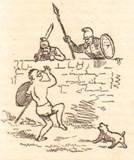
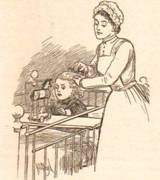
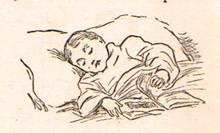
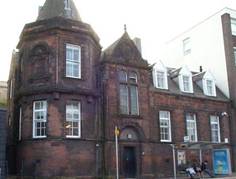
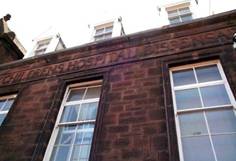


|
Sadly, the building now looks in a sorry |
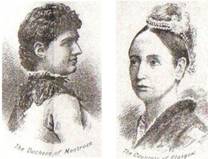
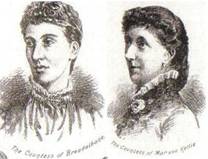
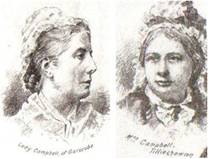
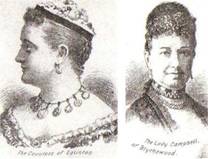
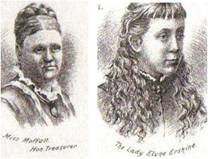
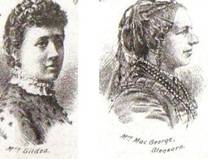
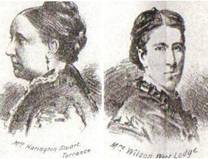
|
As I looked further into the history of this building and how it was funded, I wondered why it had been purposely built in this location, given that Yorkhill was not that close by. It turns out, contrary to my ill-informed belief, that Yorkhill was not the first hospital exclusively for children in Glasgow. |
|
Originally, children had been treated at the same hospitals as adults, which wasn’t always appropriate. In various parts of the world hospitals exclusively for children had been built and the idea was mooted in Glasgow in the 1860s. A Grand Bazaar was held in December 1866 in Glasgow’s City Hall to raise money for this and other causes. The woman behind all this fundraising was Beatrice Clugston, who had befriended the ‘Great and the Good’ and had founded many charitable institutions and raised money for them. Although she was principally the main instigator of these occasions, her name is largely forgotten in Glasgow, as her events were often accredited to the most senior of the ladies involved in the enterprise. |
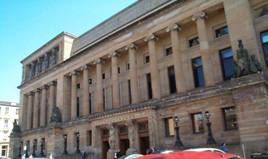
|
This part of the Mitchell Library now houses a café, theatre, children’s library, computer suite and conference facilities, but was originally the St. Andrew’s Halls. The Halls were destroyed by fire, after an event in 1962, then were renovated and re-opened in 1973 as an extension of the library. |
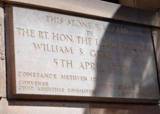

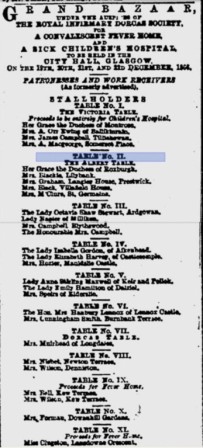
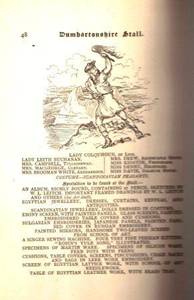
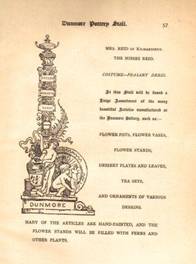
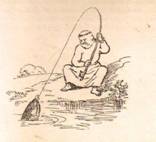
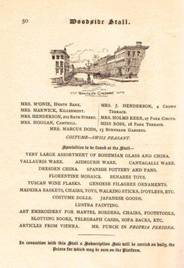

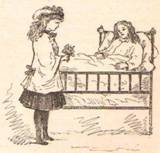
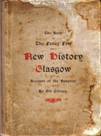
|
Unfortunately, although the money had been raised—and there were many individuals and organisations who also contributed; because of disagreements between the promoters and prominent medical practitioners, the hospital did not open until 1882. The house of a David Anderson in Scott Street , Garnethill had been purchased in 1880 and James Sellars, who had designed the St. Andrew’s Halls, was chosen to adapt the building to be suitable as a hospital. He toured various children’s hospitals in England to see what was done there. |
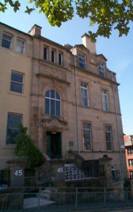
|
The building in Scott Street still stands, now (2013)part of St. Aloysius College. Over the doorway is the sculptured façade of a mother and baby. The original house was the right-hand part of the building, and there were extensions built over the years, as the number of patients increased. |
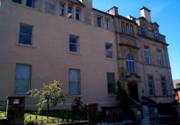
|
It was then decided to build a Dispensary to ease the pressure on the hospital, and this is where the Fancy Fair came in. And why the dispensary was built where |
|
it is, in close proximity to the hospital. The Dispensary served as a clinic for the children and they could be assessed there for hospital admission, if necessary. The mothers were also taught how to care for their children’s well-being and sometimes were visited at home by nursing staff. There were also ‘country’ locations of the hospital, mainly for convalescence and recuperation, although some medical treatment was administered and operations were performed. |
|
Eventually, larger and more modern premises were required for the hospital, which led to the original JJ Burnett designed hospital at Yorkhill, the Royal Hospital for Sick Children, opened by King George V and Queen Mary in 1914. The Sick Children’s Hospital still (2013) occupies the Yorkhill site, but is a late 1960s, early 1970s building with more recent additions.
|
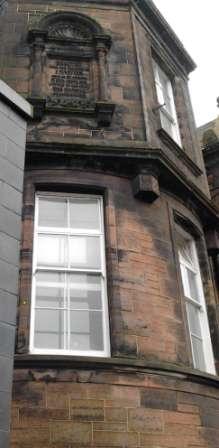
|
Yorkhill Hospital site :- |



